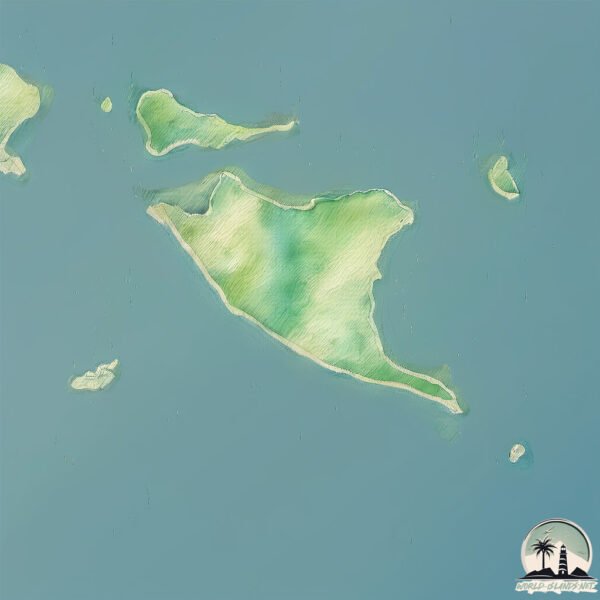Welcome to Jumundo , a Continental island in the Yellow Sea, part of the majestic Pacific Ocean. This guide offers a comprehensive overview of what makes Jumundo unique – from its geography and climate to its population, infrastructure, and beyond. Dive into the details:
Geography and size of Jumundo
Size: 4.575 km²Coastline: 15.7 kmOcean: Pacific OceanSea: Yellow SeaContinent: Asia
Jumundo is a Small Island spanning 4.6 km² with a coastline of 15.7 km.
Archipel: –
Tectonic Plate: Eurasia – One of the world’s largest tectonic plates, the Eurasian Plate covers a significant portion of Europe and Asia. It’s characterized by diverse geological features, including the Ural Mountains, the European Plain, and the Himalayas formed from its collision with the Indian Plate.
The geographic heart of the island is pinpointed at these coordinates:
Climate and weather of Jumundo
Climate Zone: ContinentalClimate Details: Monsoon-Influenced Hot-Summer Humid Continental ClimateTemperature: Hot Summer
Climate Characteristics: Hot summers with monsoon rains, contrasting with dry, cold winters. Typical of east Asian continental edges.
Topography and nature of Jumundo
Timezone: UTC+09:00Timezone places: Asia/TokyoMax. Elevation: 51 m Mean Elevation: 28 mVegetation: Agricultural MosaicTree Coverage: 54%
The mean elevation is 28 m. The highest elevation on the island reaches approximately 51 meters above sea level. The island is characterized by Plains: Flat, low-lying lands characterized by a maximum elevation of up to 200 meters. On islands, plains are typically coastal lowlands or central flat areas.
Dominating Vegetation: Agricultural Mosaic
Vegetation: 9 vegetation zones – Very Highly Diverse Island
Infrastructure and Travelling to Jumundo
Does the island have a public airport? no .
Does the island have a major port? no .
The mean population of Jumundo is 126 per km². Jumundo is Moderately Inhabited. The island belongs to South Korea .
Continuing your journey, Seongmodo is the next notable island, situated merely km away.
주문도여행(www.jumundo.com)
주문도를 12년 전부터 여러 차례 다니면서 촬영한 사진과 영상으로 만들었습니다. 여행 정보는 다양한 정보로 소개되고 있어서 저는 ...
주문도여행(www.jumundo.com)
주문도를 12년 전부터 여러 차례 다니면서 촬영한 사진과 영상으로 만들었습니다. 여행 정보는 다양한 정보로 소개되고 있어서 저는 ...
주문도를 12년 전부터 여러 차례 다니면서 촬영한 사진과 영상으로 만들었습니다. 여행 정보는 다양한 정보로 소개되고 있어서 저는 ...
230924 #Jumundo #Ganghwado #Incheon #주문도
South Korea is classified as Emerging region: MIKT: Mexico, Indonesia, South Korea, and Turkey – Economies recognized for their development potential and emerging market status. The level of income is High income: OECD.
News – Latest Updates and Headlines from Jumundo
Stay informed with the most recent news and important headlines from Jumundo. Here’s a roundup of the latest developments.
Loading...
Please note: The data used here has been primarily extracted from satellite readings. Deviations from exact values may occur, particularly regarding the height of elevations and population density. Land area and coastline measurements refer to average values at mean high tide.

